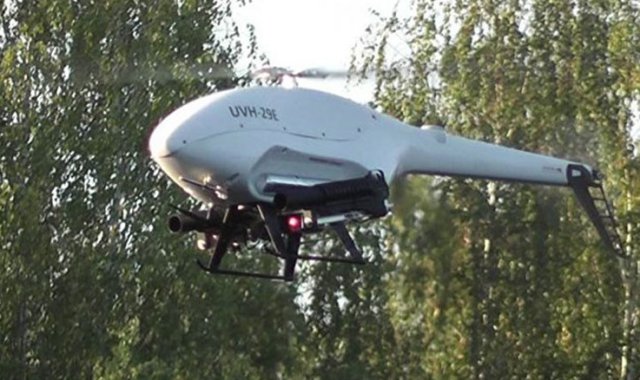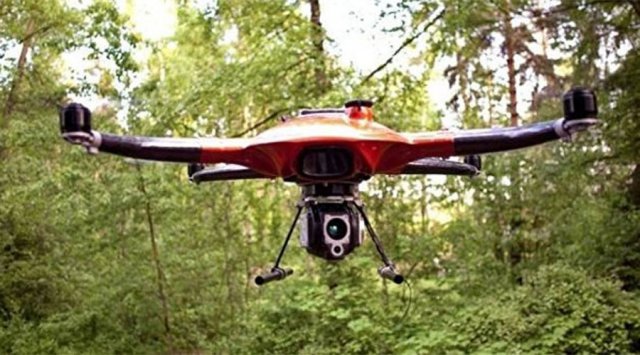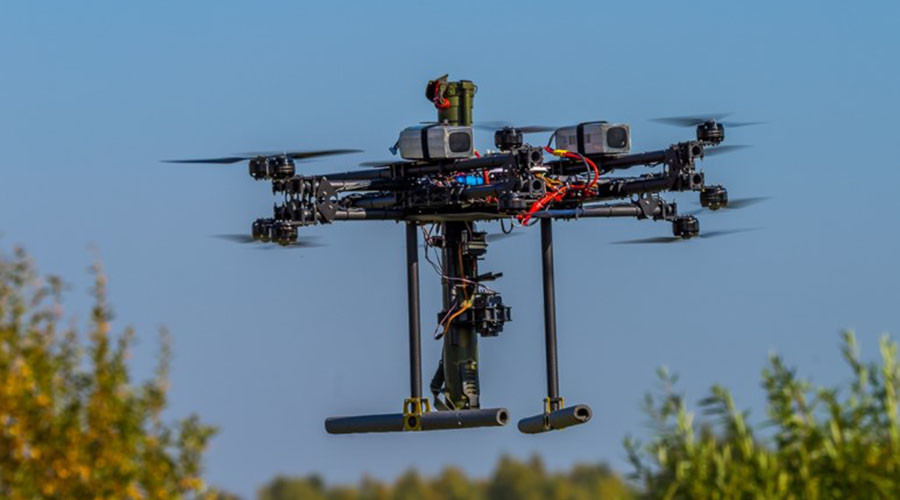Russia has revealed a new concept whereby a multicopter unmanned aerial vehicle (UAV) has been adapted to the anti-tank role with the fitting of cameras and a shoulder-launched rocket system.
The multicopter complex was unveiled at a military robot conference near Moscow. Consisting of several drones, the complex is set to perform reconnaissance tasks, monitor the battlefield and eliminate targets. The versatile airborne robotic complex has been developed by Sistemprom, an integral part of the United Instrument Manufacturing Corporation (Rostec). It was presented at the Russian Armed Forces Robotics conference at Kubinka’s Patriot military expo, west of Moscow.
The system consists of four drones: a robotic helicopter, sentinel multicopter, reconnaissance multicopter, and an assault multicopter armed with “rocket-powered munitions.” The drones can perform tasks separately or as a joint task force.
“Sistemprom’s hardware is called to replace [soldiers] effectively where it is possible, be it scouting, patrolling, monitoring, cartography, transportation and combat missions,” Sergey Skokov, Rostec’s deputy director general, told RIA Novosti.
A group of drones could operate in a fully autonomous mode – establishing a position and keeping to a designated route, and also interacting with other robotic complexes. Each component of the complex has specific capabilities.
The robotic helicopter has an operating range of hundreds of kilometers, can perform video surveillance, make meteorological observations, and deliver cargo to designated coordinates. The reconnaissance multicopter collects video and photo material using a thermal imaging device, and passes the data in real-time mode to its control station.
The sentinel multicopter can adjust artillery fire, verifying a target’s coordinates, and monitor the situation of the battlefield.
The assault multicopter is armed with unspecified “rocket-powered munitions.”
All the drones use the combined GLONASS/GPS navigation system for positioning, course bearing and target linking.
In the 44-second video that was released by the Ministry of Defence (MoD) and posted online by the state-controlled RT news channel, the multicopter is shown engaging a number of simulated armoured targets at a variety or ranges, elevations, and azimuths. Although several firings are shown, the footage and images of the multicopter show it to be a single-shot solution, indicating it was landed and the launcher either changed or reloaded after each demonstration.
The rocket appears to be unguided and visually sighted, as evidenced by the ‘rocket-eye view’ of the onboard camera in the opening seconds of the footage and the optical sighting system that has been flipped down over the lens.
IHS Jane’s understands that the rocket used is most likely to be the RPG-26 Aglen light anti-tank weapon. The RPG-26 fires the 72.5 mm PG-26 rocket that is armed with a HEAT warhead and has an initial velocity of 144 m/s. It has a maximum effective range (from the ground) of 250 m, with target penetration of 400 mm of rolled homogenous armour (RHA) plate.
Sources: RT; IHS Jane’s 360




